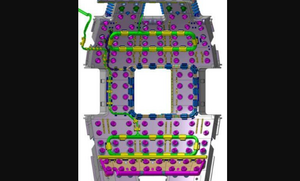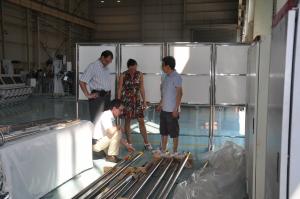In-vessel coil prototype manufacture will be completed this year by ASIPP within the framework of a Task Agreement signed with ITER in 2011. All mechanical and electrical tests are scheduled to be completed by March 2014. ASIPP subcontracted part of the work, principally design and analysis, to PPPL. "The development of the in-vessel coils has been a team venture, undertaken by two experienced laboratories and a core team at the ITER Organization that leads and supervises the work and looks after the integration and interfaces, as well as assembly and installation, the schedule and procurement," emphasizes Anna.
The progress and positive results of in-vessel coil development work were reported to
last month's Science and Technology Advisory Committee (STAC), which expressed its satisfaction and recommended the inclusion of the coils into the ITER Baseline.
The ITER Organization team is now preparing for the in-vessel coil Final Design Review scheduled for March 2014. "We're fixing all the major interfaces (power supplies, cooling water, blanket modules, vacuum vessel), monitoring the progress of the Task Agreement, and preparing for the in-cash procurement of the system," explains Anna. "We are working to a tight deadline—our system must be installed and assembled in 2019."



